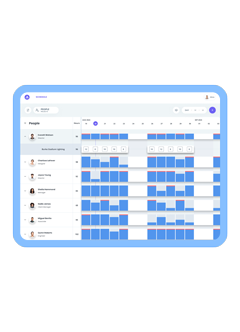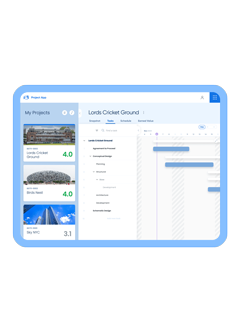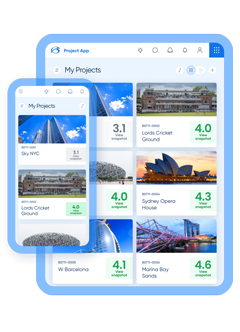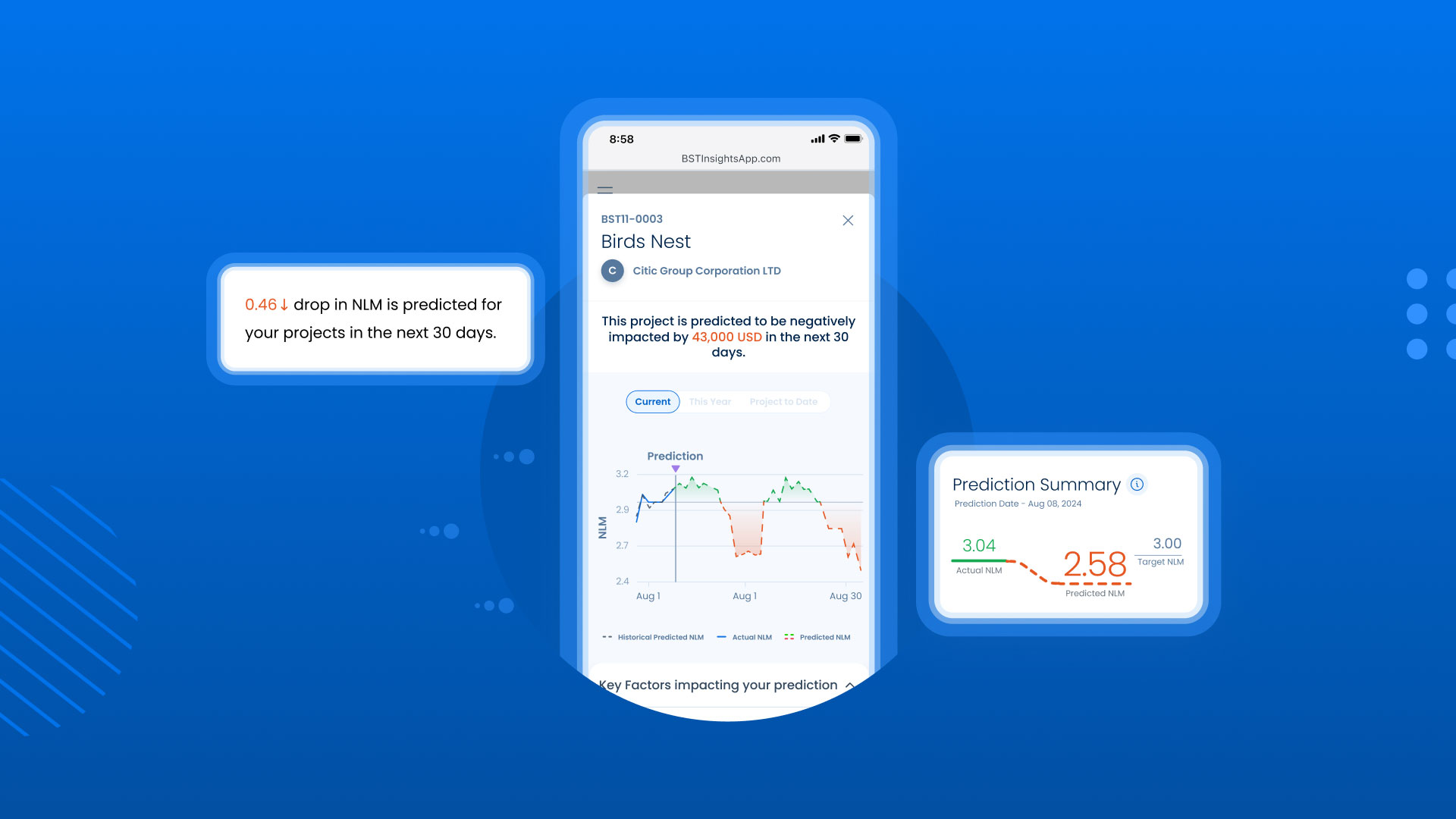If you don’t have profitable projects, you can’t have a profitable company – that’s what makes the Project Accountant’s role so important. With one foot in accounting and another foot in project management, these are the three main concepts every Project Accountant needs to know.
Project Accountants need to speak two languages: accounting and project management.
Picture this: on one end, when the accounting team reviews revenue for the firm, they may require detail of what projects contributed to that value. And on the other end, while the Project Manager is aware that their project produced revenue, they would like additional detail on the tasks that went into producing that revenue.
But the two teams don’t speak the same language, making it hard to get the information they need from each other – that’s where your role as a Project Accountant comes in. You service both teams by providing a financial overview when needed, and project details when needed.
Read on to see how I tapped into my 25 years of experience in the AEC industry and pulled together the three major concepts every Project Accountant should know in order to effectively communicate both financial and project overviews.
Contract Fee Types
As soon as your firm wins a project, the project planning begins, and both the project and accounting teams become interested. The project management team schedules, executes, and authorizes client billing for the project, and the accounting team recognizes the revenue generated from completed work on the project.
But what determines the amount and method the project team must approve to get billed, and the amount of revenue that the accounting team is supposed to book? It’s the contract fee type. Let’s look at a few of the common contract fee types you might come across in an AEC firm.
For example, if you’re dealing with a Cost Plus contract type (also known as Time and Material), this means all time and expenses charged to the project are to be billed and accounted for as revenue. On the other hand, if a contract is written as a Cost Plus Maximum contract, this will function as a Cost-Plus contract, but the amount of time and expense will be limited to a certain value.
Those are pretty straight forward, but the next set of contract types can get a little tricky – so I’ll provide an example for each.
For Lump Sum or Fixed Price contracts, these specify a fixed amount that will be paid for services based on a percentage of completion, regardless of the time and expense attributed to fulfilling the service.
So, let’s say you have a fixed price contract of $10,000. Based on this contract, you will bill $10,000 for services rendered. Whether it costs $5,000 or $11,000 to complete the work, your firm will receive the fixed price of $10,000.
As work is executed, a percent complete invoice can be generated. When a percentage of the work completed is selected, an invoice of percent complete multiplied by $10,000 is sent for payment.
Only one more to go! For Cost Plus Fixed Fee contracts, these projects are built to reimburse your firm for two items: the cost of services and a fixed fee that is pre-defined by the contract. Here’s what I mean:
Imagine that you’re planning for an upcoming project, and your team’s salaries average $50 per hour. Since the project is estimated at 100 hours – the labor cost calculates as $5,000. Next, you’ll account for the cost to run the business. In this example, it’s 1.8 times the cost of your payroll, so your overhead calculates as $5,000 X 1.8 = $9,000. This makes your total cost $14,000 ($5,000 + $9,000).
Now for the fixed fee part. Your client gives you a fixed fee of $1,000, which brings your total cost plus fixed fee to $15,000 for the contract ($14,000 + $1,000).
This is the project overview part you need to be able to communicate. By understanding which fee type you’re working under, you can monitor the time and expense project details and alert the Project Manager when charges are approaching the contract fee limit. This can be a tremendous benefit to the project management team since it helps avoid project overruns that can be detrimental to the profitability of a project.
Once you’ve captured the time and expense details, it’s important to understand the meaning of revenue: Revenue, is the booking of income that is derived from completed work. In understanding the point at which your accounting team recognizes revenue, you can provide the proper revenue value they need for posting.
Revenue Recognition
Now that you understand how much can be accounted for as revenue based on contract type, the next step is to know when that revenue can be recognized. To know when to recognize revenue, the first thing you need to do is determine which accounting method your firm has adopted.
We’ll explore three possible methods and see how each method builds on the previous one, adding more visibility to your firm’s revenue.
Here are the three stages at which revenue can be booked:
- When the payment is collected
- When the invoice is sent
- When the work is completed
The first method is called cash basis accounting, which states that revenue will be recognized when payment is received. Because revenue is booked only when you receive payment, this method mirrors your firm’s bank statement and provides a true picture of cash flow.
Next, is accrual basis accounting based on accounts receivable. With this method, revenue is recognized when the invoice is sent. At this point, it shows when you requested payment from your client (the invoice), and when payment was received (cash basis accounting).
Using the accrual method based on accounts receivable allows you to calculate how long it takes between sending an invoice and receiving payment – which the cash basis accounting method alone cannot give you.
The last method, and the most comprehensive, is accrual basis accounting based on Work in Progress.

Work in Progress
For the most detailed overview of your firm’s revenue, the accrual-based Work in Progress method is used. In this case, revenue is recognized when the work is done.
By recording revenue when work is completed, it allows you to monitor the time between completing work and invoicing the client, and then from invoicing the client to collecting payment. Now you’ve got the whole “revenue” picture!
And because the project management team is already aware of when work is completed and billed, this method allows the accounting team to have that same knowledge. Having that information earlier on allows the accounting team to determine how those milestones affect the firm financially when each one occurs.
When using Work in Progress, you’ve accounted for every stage of the revenue journey – providing the greatest level of insight of all three accounting methods.

Are you starting to see why it’s so important for you to understand how to evaluate time and expense details of a project as they’re affected by contract types? Knowing this information helps you fulfill the two major responsibilities you have for each team:
- Checking in on Project Managers to ensure work is staying within contract limitations
- Reporting to Accounting Managers on the amount of income that can be earned based on completed work
Conclusion
In an AEC firm, money is mostly spent and earned because of projects. And with several projects going on at once, with all potentially different ways of earning money based on fee types – Project Accountants need to understand how to speak to both the project details, and the financial results of those project details.
That’s why, as a Project Accountant, you’re tasked with a major undertaking: staying up to date with the relevant terminology in both worlds. Luckily, we created a tool to help you with this. Introducing: The Ultimate ERP Glossary for AEC Firms.
As this glossary goes through the span of the entire project lifecycle, you’ll find 150 of the most commonly used AEC terms that cover accounting, project management, project delivery, and much more.










